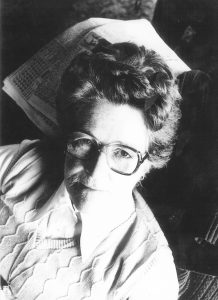For decades, public health scientists assured us that the common cold was caused by our spending half the year indoors sneezing on each other. There’s no evidence, they told us, that Ireland’s long-standing position as the world’s leading producer of winter phlegm had anything to do with the cold or the wet. “Old wives’ tales” they said, when we pointed out that for 10,000 years our mammies have been telling us that we’ll catch our death if we go out dressed like that.
And then came a complete change of tack. Scientists at Yale actually looked at the evidence and found – surprise – that rhinoviruses, the culprits behind most colds and chest infections, thrive in cooler temperatures. And the lower the temperature, the lower our innate immune response to viruses. And what’s more, our noses are usually three to four degrees colder than the rest of the body.
The scientists’ advice for avoiding runny noses? “Always stay in warm tropical weather or try to prevent the nasal cavity experiencing very cold air.” Translated into Irish terms, that says “Emigrate south or dress the way your mother told you”.
The first lesson is that the phrase “There is no evidence” is just a euphemism for “We don’t know”, even when uttered by a scientist.
The second is that not all evidence is cast-iron scientific evidence. Most research advice will tell you to treat your family traditions with deep scepticism and most professional researchers will say “Yeah, right” (under their breath) when you tell them you’re descended from kings and princes. But even though centuries of tradition may not constitute forensic proof, it remains genuine evidence. Discount it at your peril.
But the most important lesson is that, although your Mammy might not be absolutely right absolutely all the time, the odds in her favour are pretty good.

So that’s why they’re called “Colds”?
I have a friend who has a positive viewpoint on colds. She maintains that it’s nature’s way of cleaning out the system and without this, we’d have far more cancers. So we should welcome colds as doing us good!
Sure didn’t you know John the Irish Mammies are always right.
Family stories always have to be considered with a grain of salt. When I started I was told a a benign pair of facts; first that my ancestors were from Omagh on the McGuigan/Goodwin line and second that the Cassidy immigrant was from Newry, County Down and had buried two wives in the US and their stillborn children. My actual research found the McGuigans were from Clogher very near but distinct from Omagh. It also found that the Cassidy family was indeed from Newry but in addition to the Down part they also showed up in the County Armagh records for Newry. More interesting was that neither the first nor the second Mrs Cassidy had died in childbirth. Also learned was that both women delivered a living baby that was baptized. Margaret McKeon Cassidy did die a week after her delivery but her daughter died at 6 months old. Ellen Hart Cassidy died 9 months after her delivery and her daughter died at 11 months old. The third Mrs Cassidy had the most outrageous claim to her story. Bridget Benson Cassidy was from County Sligo, was 39 when she had her only child and had a brother that”fought with General Custer, his horse was lame the day of the Little Bighorn and that’s how he survived.” Research showed that Bridget and James Benson hailed from Ballysadare, Co. Sligo. Bridget was actually 40 when her only child was delivered. James did not stay in camp the day of the Little Bighorn. He did, however, serve as a farrier in the US Army from 1876-1881. The day of the Little Bighorn he was stationed at St. Louis. This family story was not true but it was not a complete falsehood either. He had served in the army, was stationed in Dakota Territory shortly after massacre and his pension file for his widow included his marriage and death certificates.
Thanks for the words of mammy wisdom John. I’m going to start wearing a scarf
and a wool scull cap, pulled over my ears. I’ll also always remember to fact check
my Irish family lore.
same with the old saw “feed a cold and starve a fever” scientists claim there is no benefit to be had from either, that neither treatment helps… Um… well… that could be because the saying doesn’t apply to the treatment! It’s telling us how to recognise if what we have is a cold or flu (or something worse than flu) If you are feeling under the weather, but still have an appetite, it’s a cold… if you don’t want food, you have a fever… works every time… scientists don’t know the half of what our ancestors knew…